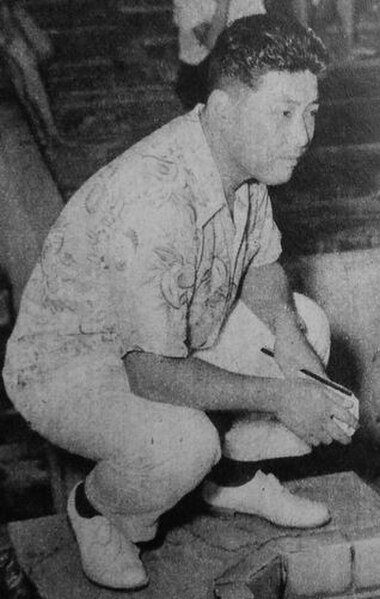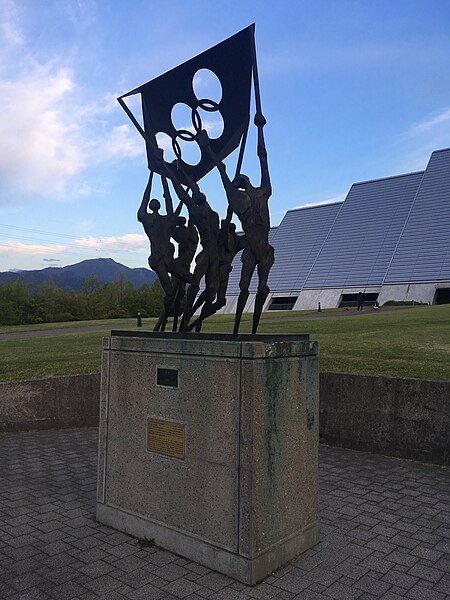The 1998 Winter Olympics, officially known as the XVIII Olympic Winter Games and commonly known as Nagano 1998, was a winter multi-sport event held from 7 to 22 February 1998, mainly in Nagano, Nagano Prefecture, Japan, with some events taking place in the nearby mountain communities of Hakuba, Karuizawa, Nozawa Onsen, and Yamanouchi. The city of Nagano had previously been a candidate to host the 1940 Winter Olympics, as well as the 1972 Winter Olympics, but had been eliminated at the national level by Sapporo on both occasions.
Main hall of Zenkō-ji in Nagano City.
Japanese macaque at Jigokudani hotspring in Yamanouchi.
Furuhashi Hironoshin, past president of the JOC
Elan by Nag Arnoldi, a gift from the IOC to Nagano, in front of M-Wave
Nagano is the capital and largest city of Nagano Prefecture, located in the Nagano Basin in the central Chūbu region of Japan. Nagano is categorized as a core city of Japan. Nagano City is the highest prefectural capital in Japan, with an altitude of 371.4 meters (1,219 ft). The city is surrounded by mountains, the highest of which is Mount Takatsuma (2,353 m), and it is near the confluence of the Chikuma River—the longest and widest river in Japan—and the Sai River. As of 1 July 2023, the city had an estimated population of 365,296 in 160,625 households, and a population density of 438 persons per km². The total area of the city is 834.81 square kilometres (322.32 sq mi).
From top of left, Zenkoji, Mount Togakushi, Kinasa village, Nagano Big Hat arena, Aerial in Kawanakajima, Oku-Subana Valley, headquarters of Marukome (famous miso manufacturing company) in Nagano, Oyaki Japanese sweets, Togakushi ski resort, and Matsushiro Castle
Stylized manhole cover displaying the Nagano Olympics emblem, with tactile paving
Asagawa Loop Line to Iizuna Kogen Ski Area built in preparations for the 1998 Winter Olympics
Matsushiro Castle (2010)








